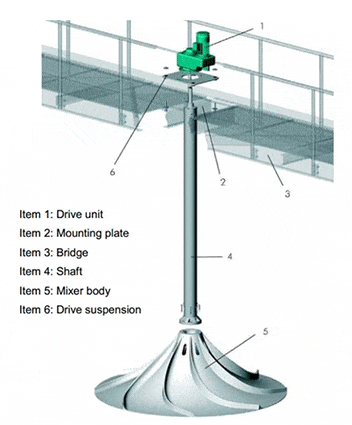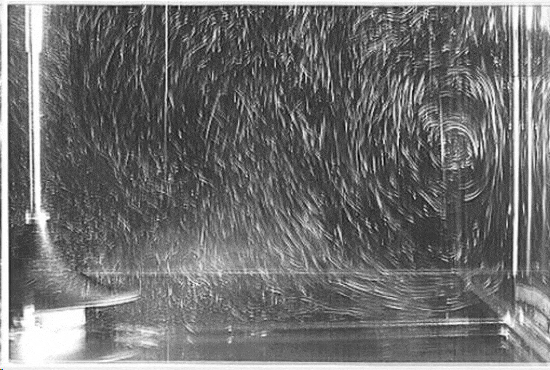 Our era is characterized by its changing technologies. The world we live in is extremely results orientated. We are constantly testing, trialing, improving. Questions of quality affect every aspect of our lives. We live in an age where everything is relentlessly improved and quality assessed.
Our era is characterized by its changing technologies. The world we live in is extremely results orientated. We are constantly testing, trialing, improving. Questions of quality affect every aspect of our lives. We live in an age where everything is relentlessly improved and quality assessed.
The wastewater industry is no exception.
Industrial clients and municipal wastewater plants have rigorous requirements to meet the consent discharge quality limits of District and Regional Councils.
Our neighbors across the ditch experience all the similar wastewater issues to us. For many years Melbourne Water, one of Australia’s largest activated sludge WwTP’s experienced difficulties in mixing the anoxic zones for the nitrogen removal process. From start-up, the water authority had ongoing concerns that the conventional submersible high-speed mixers were not providing consistently homogenous mixing and were also incurring high maintenance costs as a consequence of frequent failure.
The installation used conventional submersible mixer technology similar to that used in most New Zealand WwTPs. At the time, this was seen as the best solution to maintain a homogenous zone at an acceptable power density.
A decision was made to trial an alternative Hyperboloid mixing technology called the INVENT Hyperclassic Mixer to evaluate if this new technology could provide a long-term solution to the problem.
Mike Smith from Invent Pacific outlines the trial and results below. The results were eye-opening in many ways.
A Case Study – MELBOURNE WATER – Eastern Treatment Plant
The Alternative Technology
The INVENT mixing systems are based on a hyperboloid agitation body rotating at low speed. This configuration at low speed with low power input delivers high-efficiency mixing.
The shape of the Hyperboloid Mixer is based on extensive fluid mechanic modeling. The unique design achieves a flow profile which follows the mixer surface, thus minimizing fluid separation and the resulting energy losses. The transport ribs mounted on the mixer body cause the fluid medium to run off in a radial and tangential direction ensuring full circulation of the tank contents including corners. These details are clearly illustrated below:
The mixer energy input is predominantly at the tank floor, the resulting high bottom velocities give the hyperboloid mixer excellent suspension properties in combination with low power requirements. Disruption of the water surface is also prevented avoiding any additional air input which would interfere with denitrification or during biological phosphate removal processes in anaerobic zones. Similarly, t here is no generation of aerosols or odour stripping.
here is no generation of aerosols or odour stripping.
As can be seen from the exploded diagram, the hyperboloid mixer is constructed of three main components: the drive unit, including the mounting plate, the shaft, and the hyperboloid mixer body.
The Trial
As the WWTP had a number of identical anoxic zones, a side by side evaluation of mixing technologies was undertaken under full operating conditions. The trial was conducted with the two conventional mixers being replaced with a single INVENT hyperbolic mixer.
Extensive MLSS performance tests were run to confirm the ability of the new mixers to deliver ± 10% variance in average solids concentration.
Details of the Anoxic zones were as follows:
• Dimensions 12m x 13m x 4.5m deep
• MLSS concentration 0.5%
• SVI average of 80 ranging from 40 to 120
Existing submersible mixer installation
• 2 units 3.0kW each,
• 400mm propeller diameter
Trail HyperClassic mixer
• 1 unit 2.2kW (supplied with 3.0kW motor to match existing switch gear)
• INVENT HyperClassic HCM2500-20-3.0
• 2500mm Hyperboloid disc
The duration of the trial was over an 8 week period, and in this time the two systems were subjected to extensive MLSS testing which included general operation and re-suspension characteristics.
The Results
| INVENT Mixer | Submersible Mixer | |
| No. MLSS tests | 216 | 132 |
| Average MLSS deviation | 2.7% | 5.9% |
| Installed power density | 2.6 W/m3 | ~7 W/m3 |
| No. test points >10% deviation | 5 | 21 |
The INVENT HyperClassic mixers also demonstrated complete re-suspension of solids after 24-hour stoppage within 2 hours. No solid depositions were found.
Cost and Energy Savings
In 2011 Melbourne Water installed the Invent HyperClassic mixer system into the 4 new Activated sludge tanks in lieu of conventional submersible mixers, based on the energy and maintenance savings.
Melbourne Water have replaced all submersible mixers in the 6 existing secondary biological treatment tanks, in total 48 submersible mixers have been replaced with 24 Hyperclassic mixers.
A comparison on the energy and maintenance savings is summarised below:
| Submersible Mixers | Invent HyperClassic | |
| Tank Dimensions | 12m x 13m x 4.5m deep | 12m x 13m x 4.5m deep |
| Number of Mixers | 48 | 24 |
| Mixer Power (kW) | 3 | 2.2 |
| Energy Costs | ||
| Total Installed Power (kW) | 144 | 52.8 |
| Duty | Continuous | Continuous |
| Power cost $/kW hr | 0.19 | 0.19 |
| Annual Energy Cost | $239,674 | $87,880 |
| Est. Maintenance Costs | ||
| Annual service costs | $12,000 | $6,000 |
| Historical repair costs/year | $58,000 | $0 |
| Annual Operating Costs | $309,674 | $93,880 |
A Solution
This trial clearly demonstrated the superior mixing ability of the INVENT HyperClassic Mixers:
- A reduction of 60% in operating power
- A reduction in operating costs of 70%
and in so, gave the water authorities assurance of homogenous mixing within the zone required. Moreover, from when the testing was conducted in August 2008, the INVENT Hyper Classic mixer has demonstrated an uninterrupted service record.
An additional advantage of the INVENT HyperClassic mixer is that it has no service components below the water line. This has meant that the plant operators have been able to inspect the equipment without the need to hoist them out of the sludge. They can avoid contact with the biological effluent and reduce health and safety risks.

